What's Included
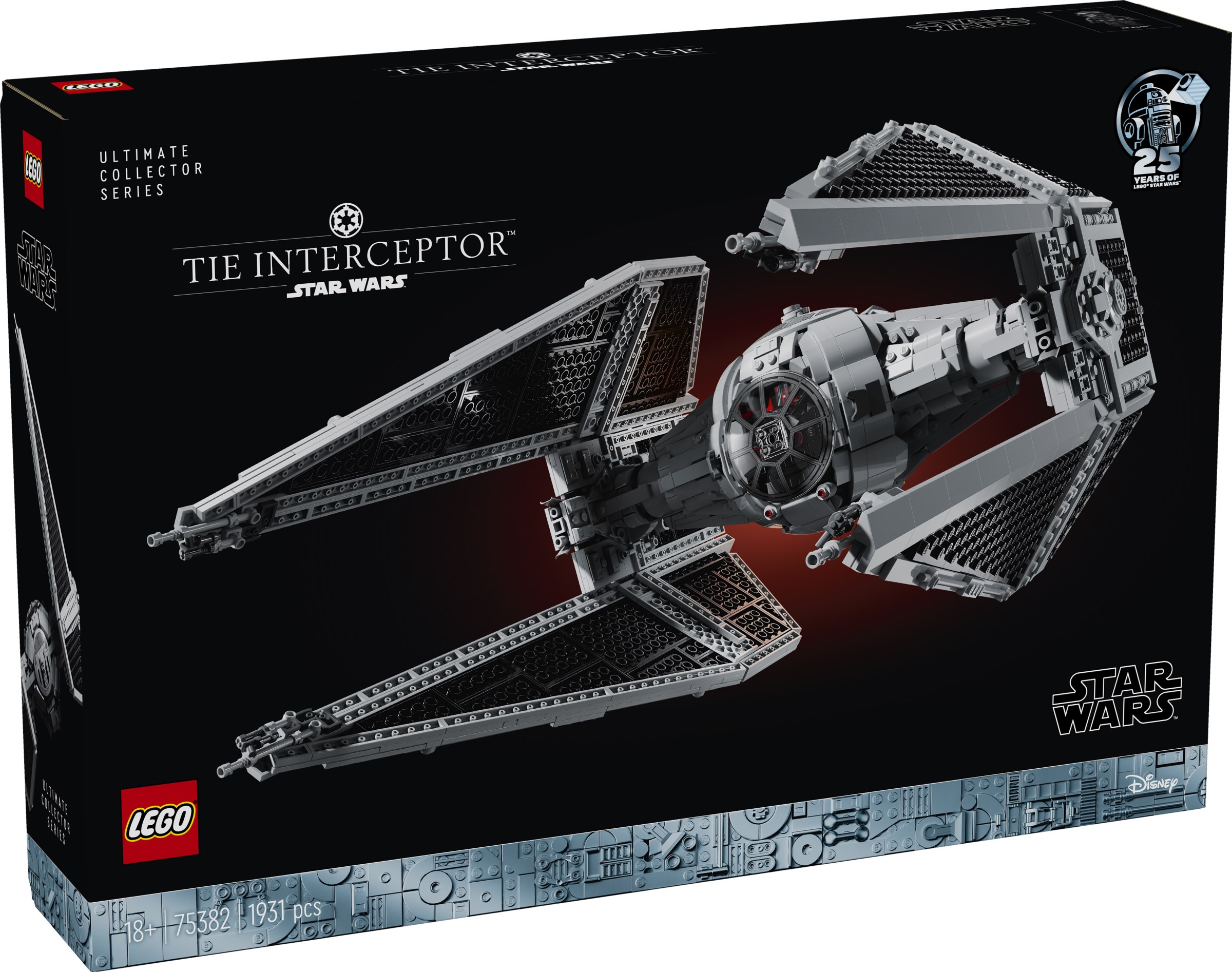

The substantial UCS box opens to reveal contents befitting the 18+ designation and premium positioning. The exclusive TIE Pilot minifigure features unprecedented arm printing, marking the first time this Imperial warrior has received such detailed treatment. Asymmetric designs on each arm include Imperial emblems, shoulder pouches, and a communication pad with updated button details. Accompanying the pilot is an elongated MSE mouse droid, exclusive to this set with command order trays adorning its top surface. The display stand components include a redesigned base with cleaner lines and a museum-quality aesthetic, though the glossy information plaque draws criticism for its fingerprint-prone finish. The 25th Anniversary LEGO Star Wars commemorative brick adds collectible significance to this already special release. Building elements emphasize authentic Imperial grays and blacks, with strategic use of curved slopes and modern elements that didn't exist when the original 7181 was designed.
Building Experience
Construction of this UCS masterpiece delivers 4-5 hours of engaging building that balances technical complexity with satisfying progress. The journey begins with a sturdy Technic brick frame foundation, establishing the structural integrity necessary for the detailed construction to follow. Building the spherical cockpit represents the set's engineering highlight, utilizing walls of brackets pivoting on one-stud axes combined with curved slopes and hinges to achieve unprecedented roundness. The engine housing emerges through eight sections surrounding a hexagonal exhaust grid, showcasing alternating wedge plates and slopes that minimize gaps. Wing construction, while repetitive, rewards patience with sharp angles achieved through geometric precision and clever use of new 2x4 slope pieces. The cockpit interior assembly provides particular satisfaction, with tiled surfaces, detailed instrument panels, and exquisite greebling that elevates this beyond typical starfighter builds. Throughout construction, modern techniques shine through – from lime green bars with red Technic half pins connecting wing panels to hinge brackets creating angled edges. The build concludes with the delicate task of attaching the distinctive dagger wings, transforming the assembled components into an immediately recognizable Imperial fighter.
Design and Screen Accuracy
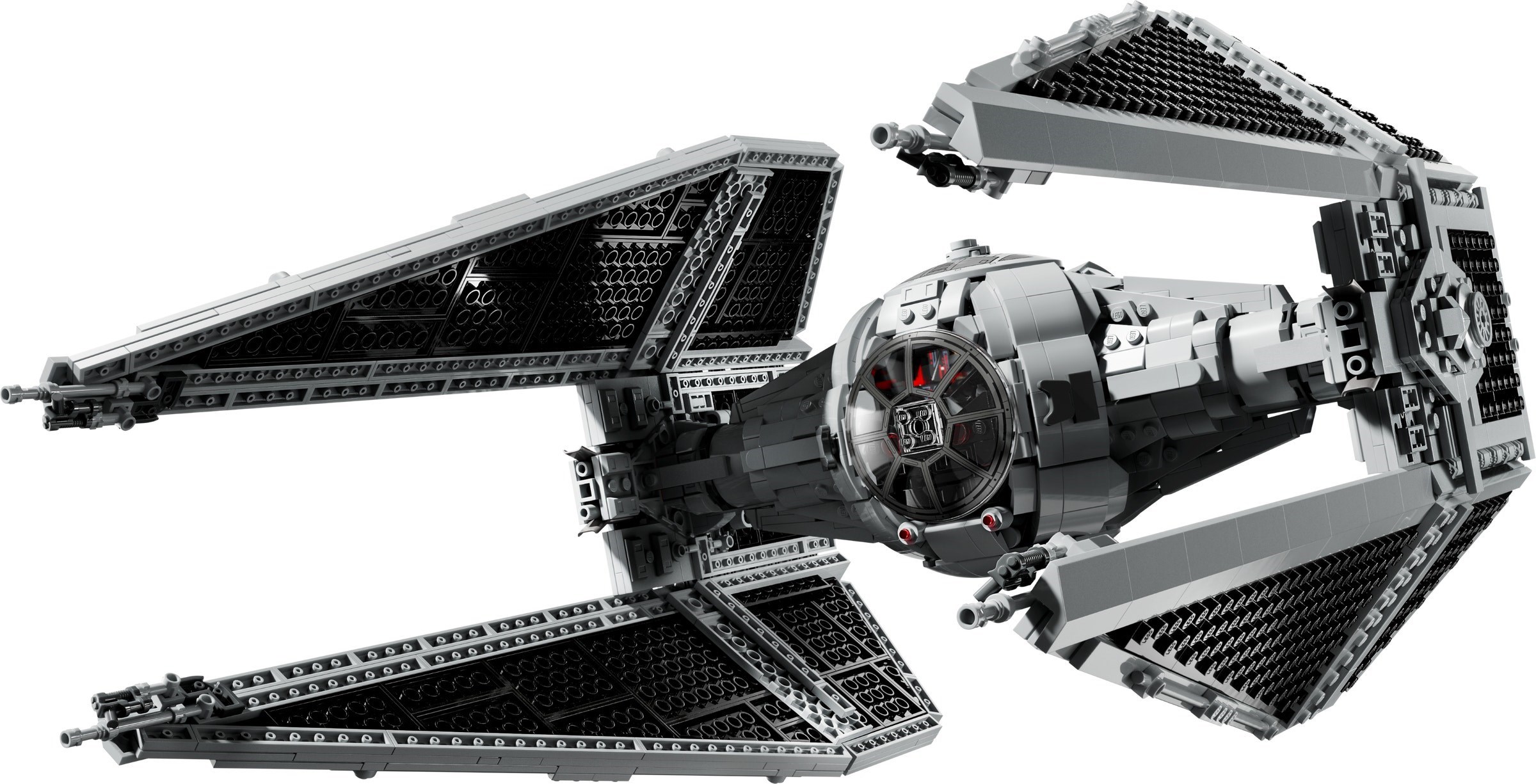
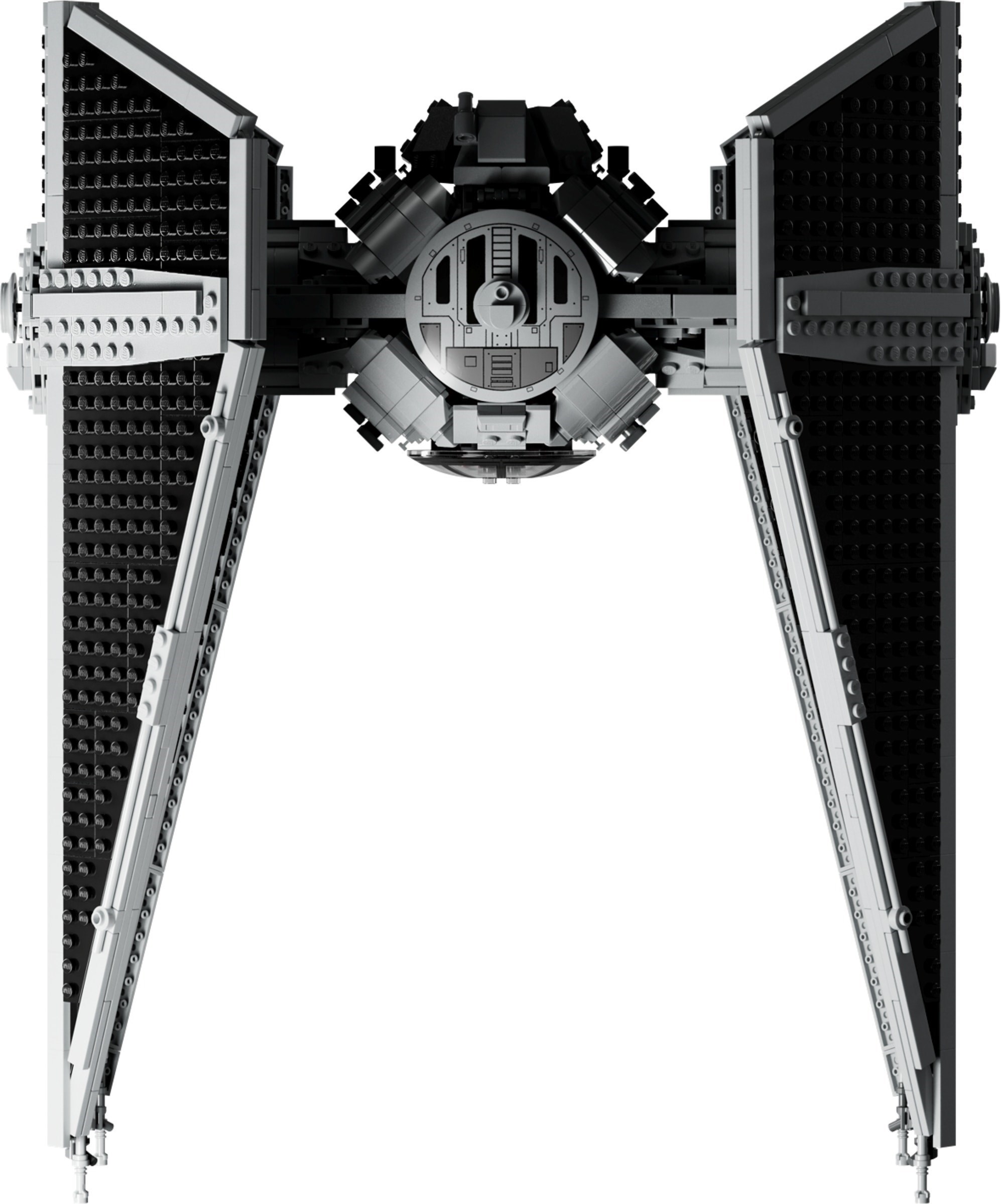
This TIE Interceptor achieves remarkable fidelity to its Return of the Jedi appearance, earning universal praise as the most screen-accurate LEGO TIE variant ever produced. The beautifully crafted cockpit pod utilizes modern curved elements to create smooth spherical shaping that dramatically improves upon the angular attempts of earlier models. Wing design perfectly captures the distinctive dagger shape, with exposed studs left intentionally visible to maintain the characteristic Imperial aesthetic. The designer's attention extends to minute details like asymmetrical sensors recreated using minifigure shovels – a deliberate homage to the original set's NPU techniques. Color accuracy adheres to authentic Imperial standards with black and light gray dominating, though Henrik Andersen initially preferred sand blue for perfect movie matching. The debate over laser cannon configuration (the set includes six versus the four or six seen on screen depending on the source) represents the only significant accuracy discussion. Minor compromises include occasional bulges and visible gaps inherent to LEGO construction, but these barely detract from what reviewers universally acknowledge as a spectacular recreation that looks impressive from every angle.
Cockpit Interior and Details
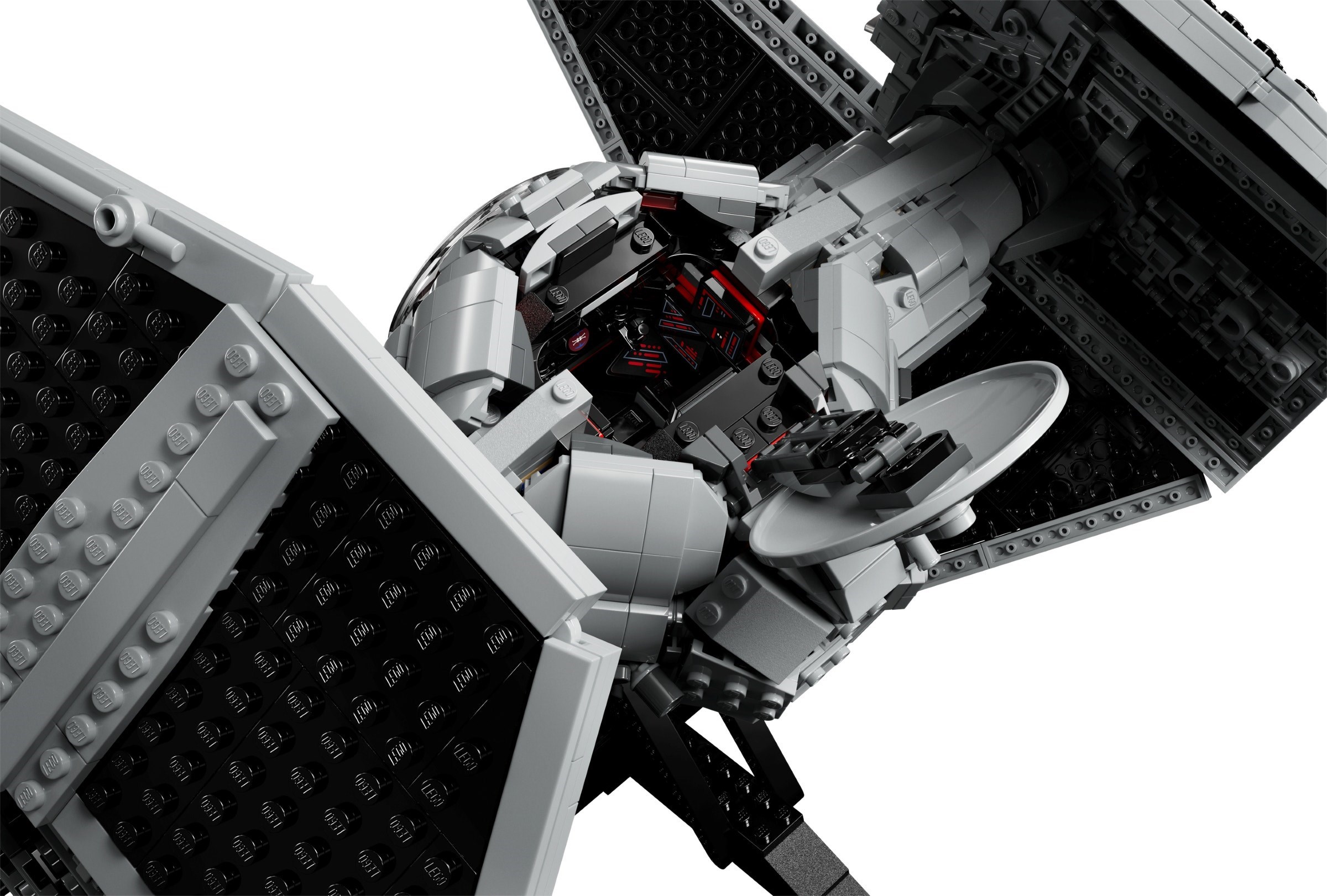
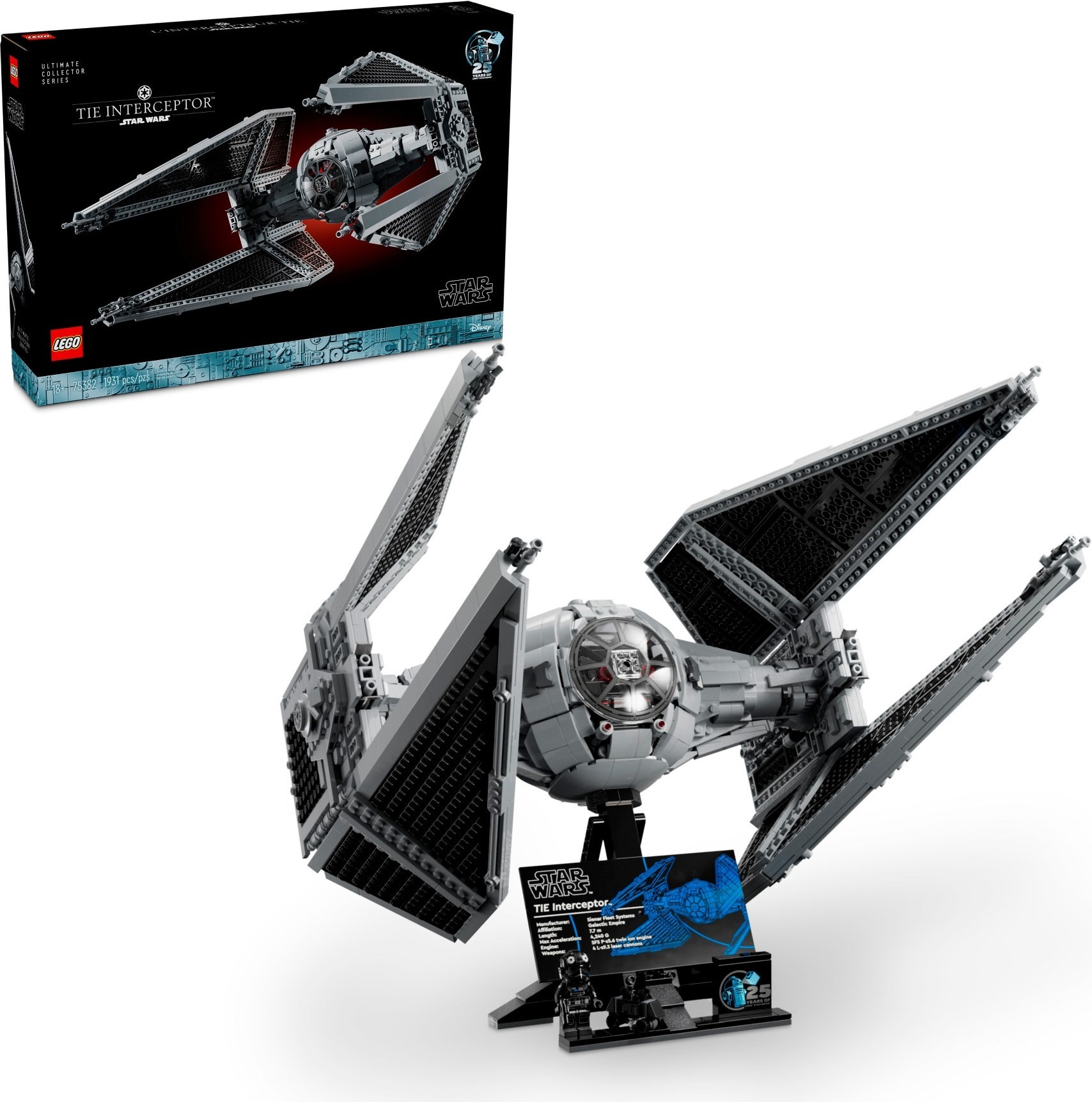
The cockpit interior represents the crown jewel of this UCS release, described by multiple reviewers as the finest mid-size ship interior LEGO has ever created. Opening the delicate but functional hatch mechanism reveals an unmatched level of detail for any starfighter set. The neatly tiled pilot seat provides authentic texture without exposed studs, while detailed instrument panels created through sticker application add visual complexity without overwhelming the space. Exquisite greebling throughout the interior creates depth and interest that rewards close inspection. The spherical construction allows for proper pilot positioning with realistic sight lines through the printed 6×6 viewport dish. This attention to interior detail elevates the set beyond mere external accuracy, creating a complete representation of the Imperial fighter that satisfies both display requirements and the detailed exploration that UCS sets demand. The cockpit window, while praised for its appearance, draws criticism for fragility – the mechanism can become loose with handling, requiring careful adjustment to maintain optimal positioning.
Display Presence and Stand Issues
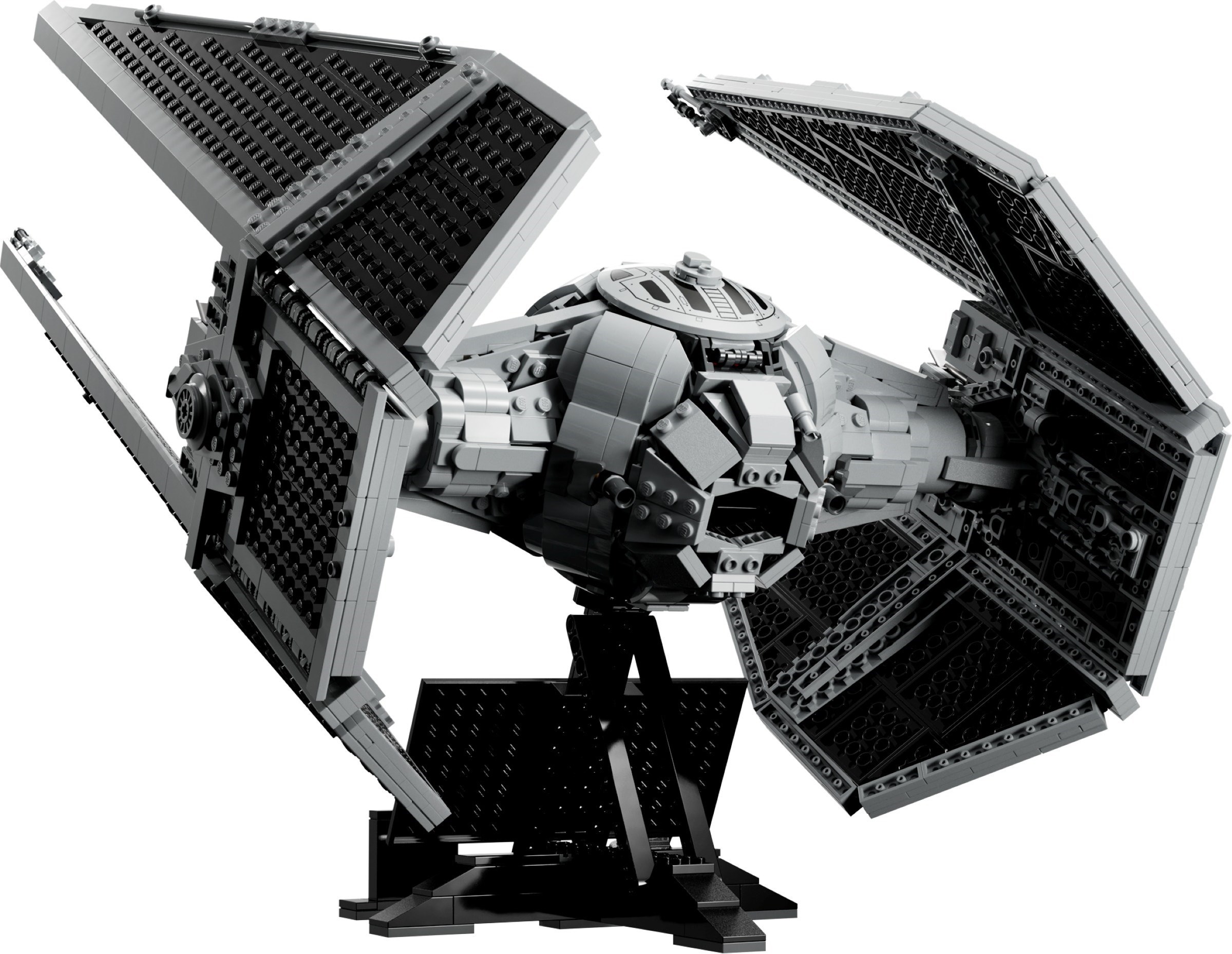

As a display piece, the TIE Interceptor commands attention with its distinctive silhouette and impressive 40cm wingspan, creating an undeniable presence on any collector's shelf. The redesigned stand features cleaner lines and a more elegant profile than previous UCS releases, incorporating dedicated spaces for both the TIE Pilot minifigure and mouse droid. However, this stand represents the set's most significant weakness – multiple reviewers report persistent issues with pieces coming apart, particularly problematic given the model's weight and display requirements. The limited angle options restrict display flexibility, preventing dynamic positioning that might better showcase the fighter's aggressive stance. The glossy plaque finish, universally criticized compared to previous matte versions, attracts fingerprints and dust while creating unwanted reflections under display lighting. Despite these stand shortcomings, the TIE Interceptor itself displays magnificently, with the exposed stud wing surfaces and smooth cockpit curves creating visual interest from every viewing angle. When positioned alongside other UCS starfighters, particularly the 75095 TIE Fighter, the evolution in LEGO design becomes dramatically apparent.
Value Analysis and Market Position
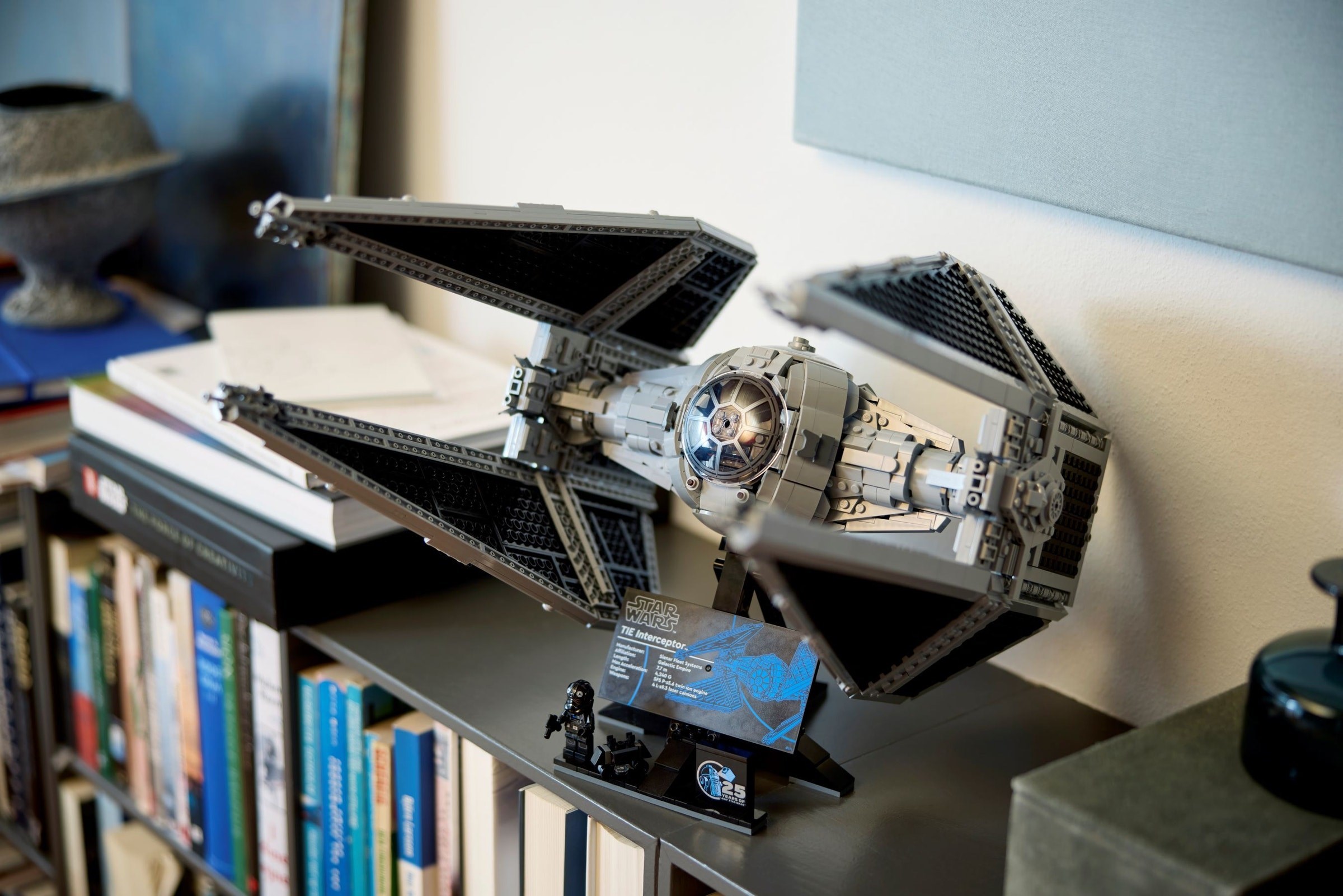
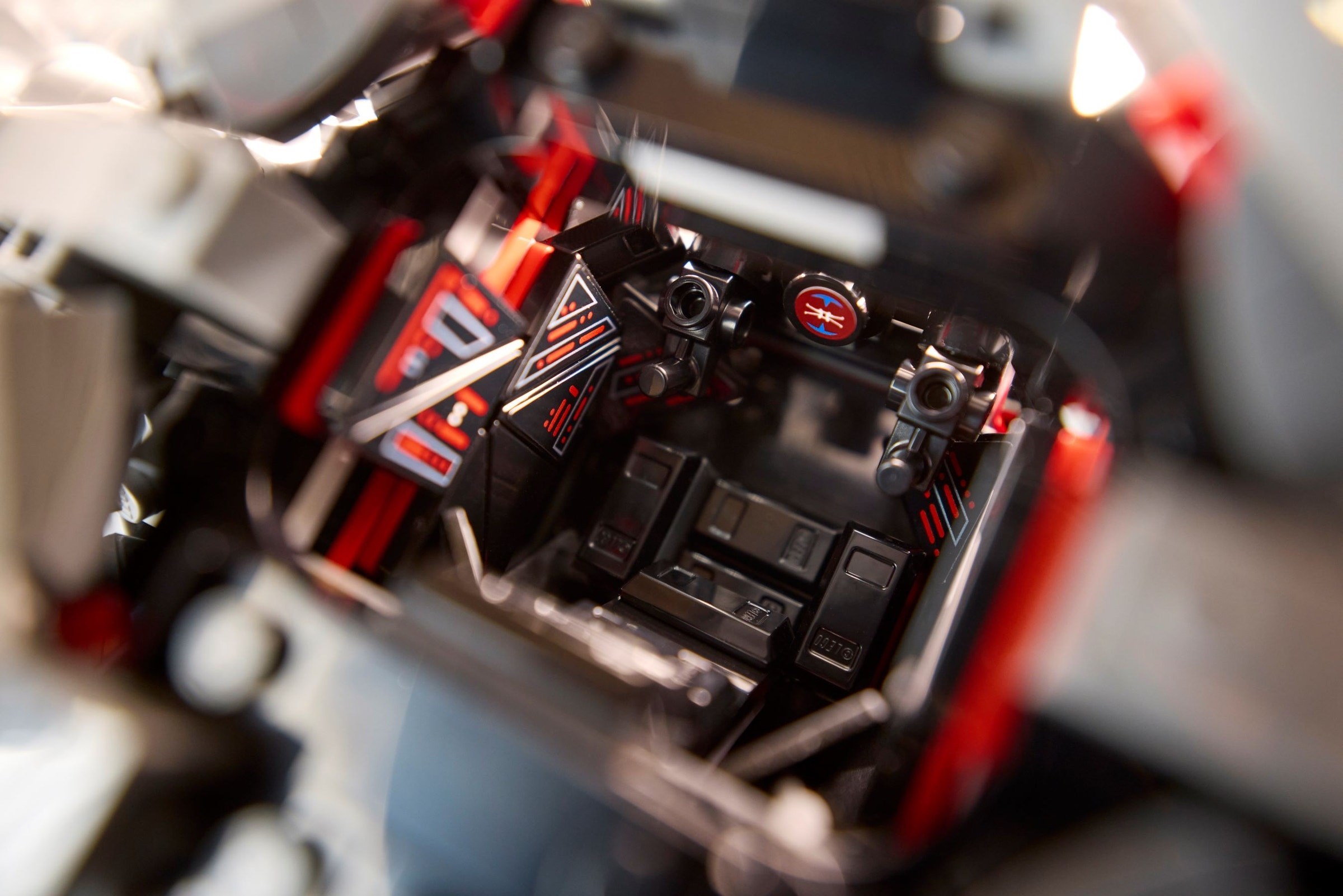
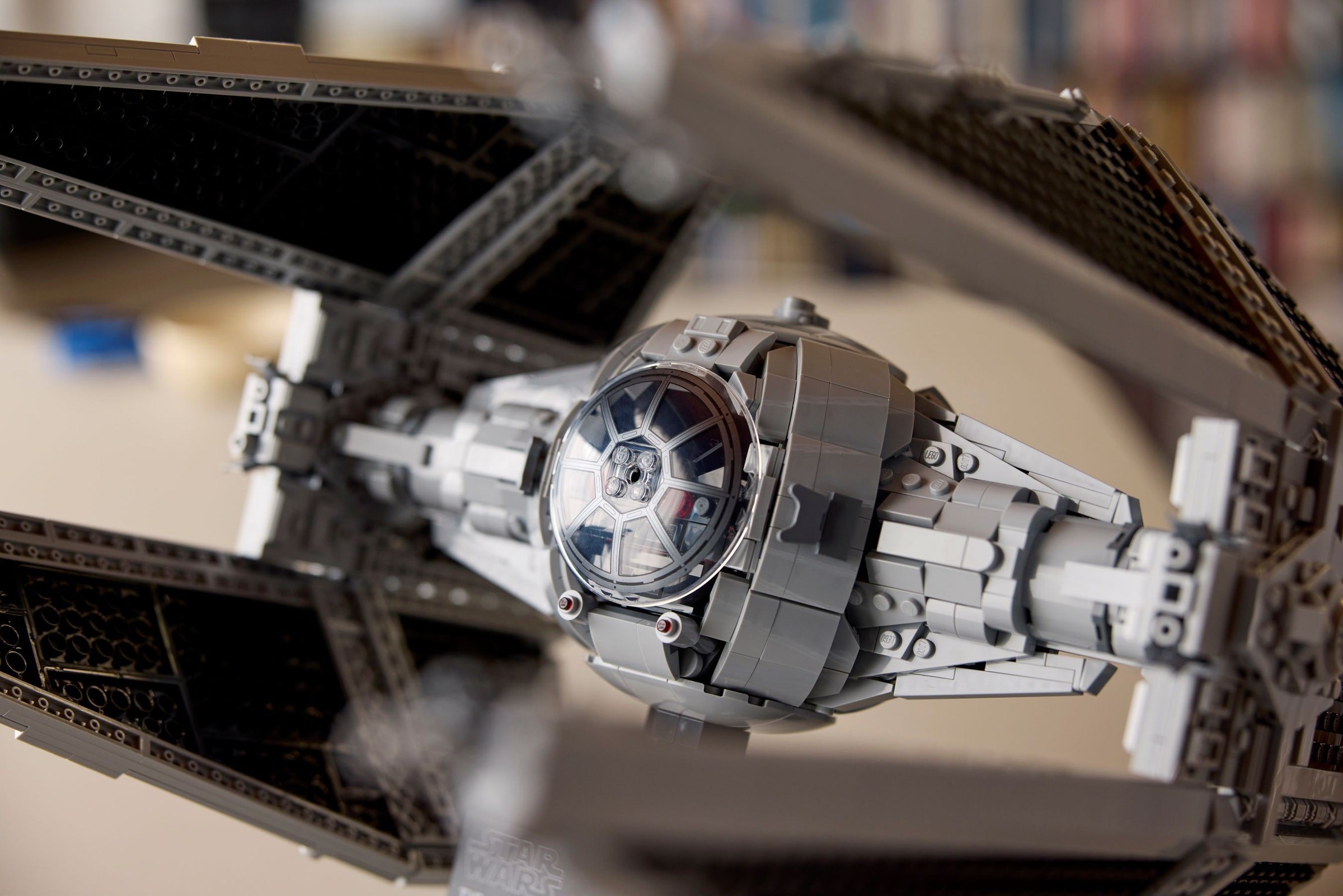

At $229.99 for 1,931 pieces, the TIE Interceptor achieves a respectable 11.9 cents per piece ratio, standard for Ultimate Collector Series releases. Current market conditions favor buyers, with average prices dropping to $195-217, representing nearly 20% savings from MSRP. The exclusive minifigures command $69.75 on the secondary market, accounting for 30% of the set's value and adding investment appeal. Historical data suggests a projected 25.89% appreciation within two years post-retirement, though current oversupply may delay value growth. With only 17 reviews maximum recorded, the set appeals to a selective audience of serious collectors rather than casual builders. Sales rankings averaging 23,633 confirm this specialized appeal, though the best rank of 1,014 demonstrates strong initial interest. Compared to other recent UCS releases, the TIE Interceptor offers superior value – delivering more sophisticated building techniques and display impact than similarly priced sets. For collectors who missed the original 7181, this represents essential acquisition; for those who own it, the dramatic improvements justify the upgrade. At current discounted prices, this set transitions from good value to exceptional opportunity.
Editor's Verdict
What We Love
- Most screen-accurate TIE variant LEGO has ever produced
- Exceptional cockpit interior detail unmatched by other starfighters
- Advanced building techniques showcase 24 years of LEGO evolution
- Exclusive minifigures with unprecedented arm printing detail
- Currently available at 20% discount from retail price
Room for Improvement
- Display stand prone to coming apart with handling
- Glossy plaque finish attracts fingerprints and dust
- Cockpit window mechanism becomes loose over time
- Limited display angle options on stand
- Some visible gaps in spherical cockpit construction